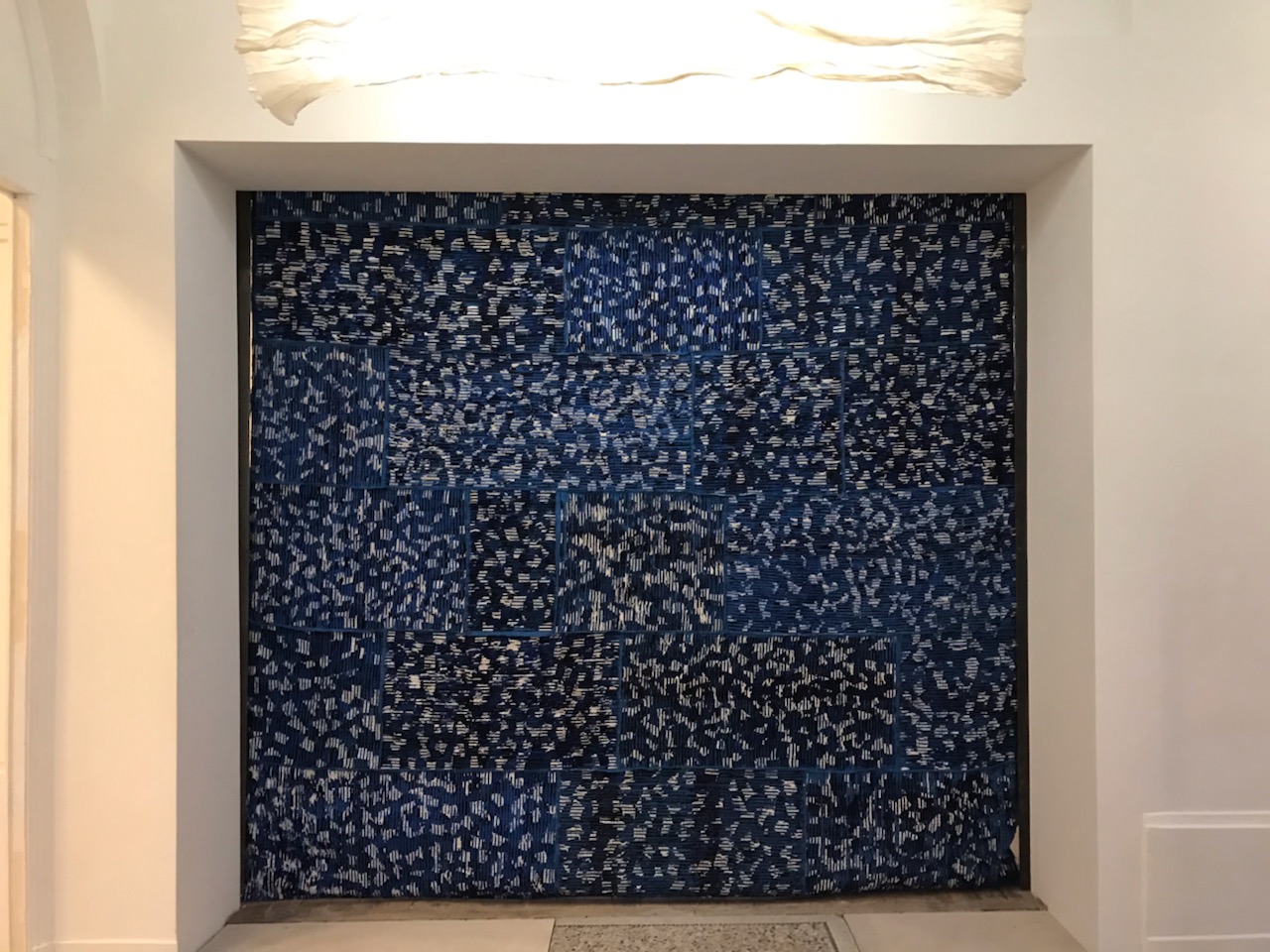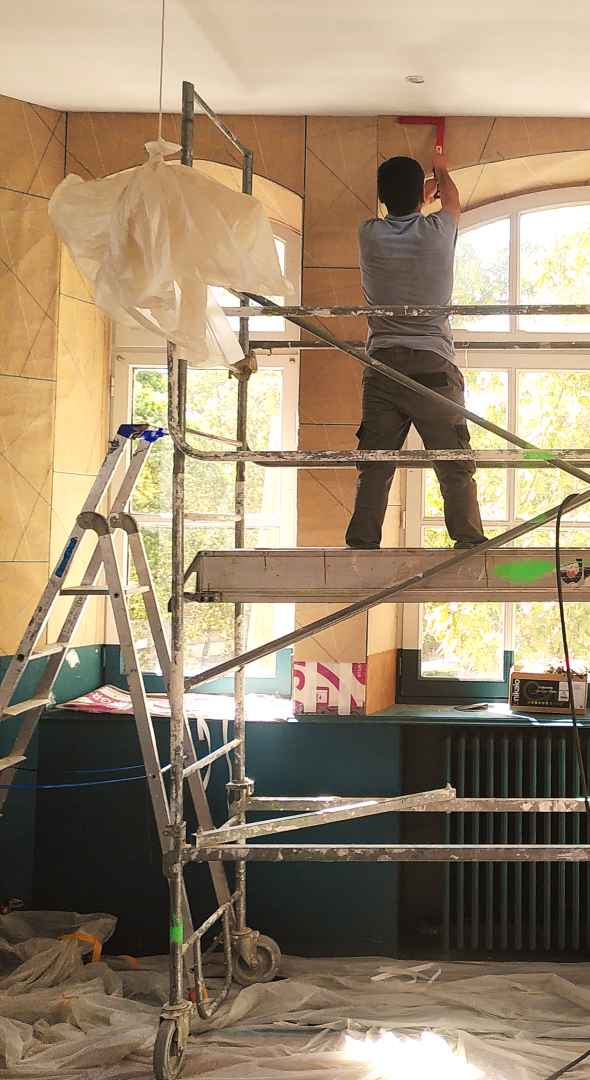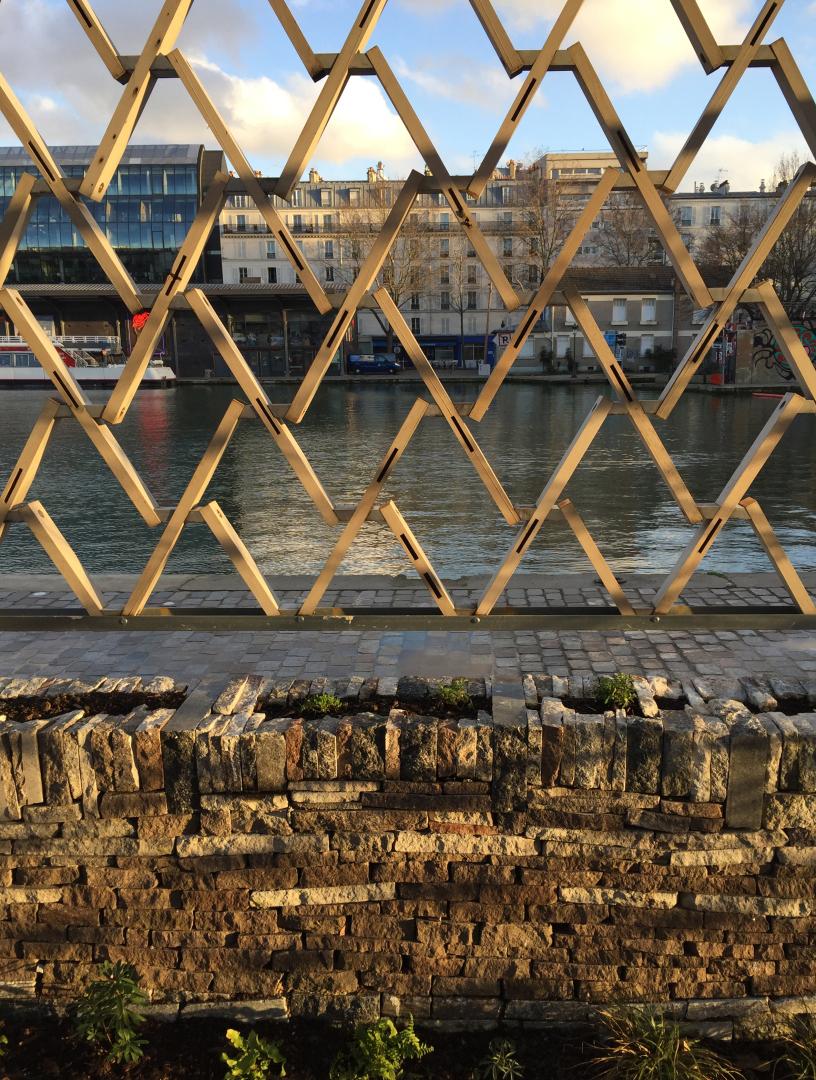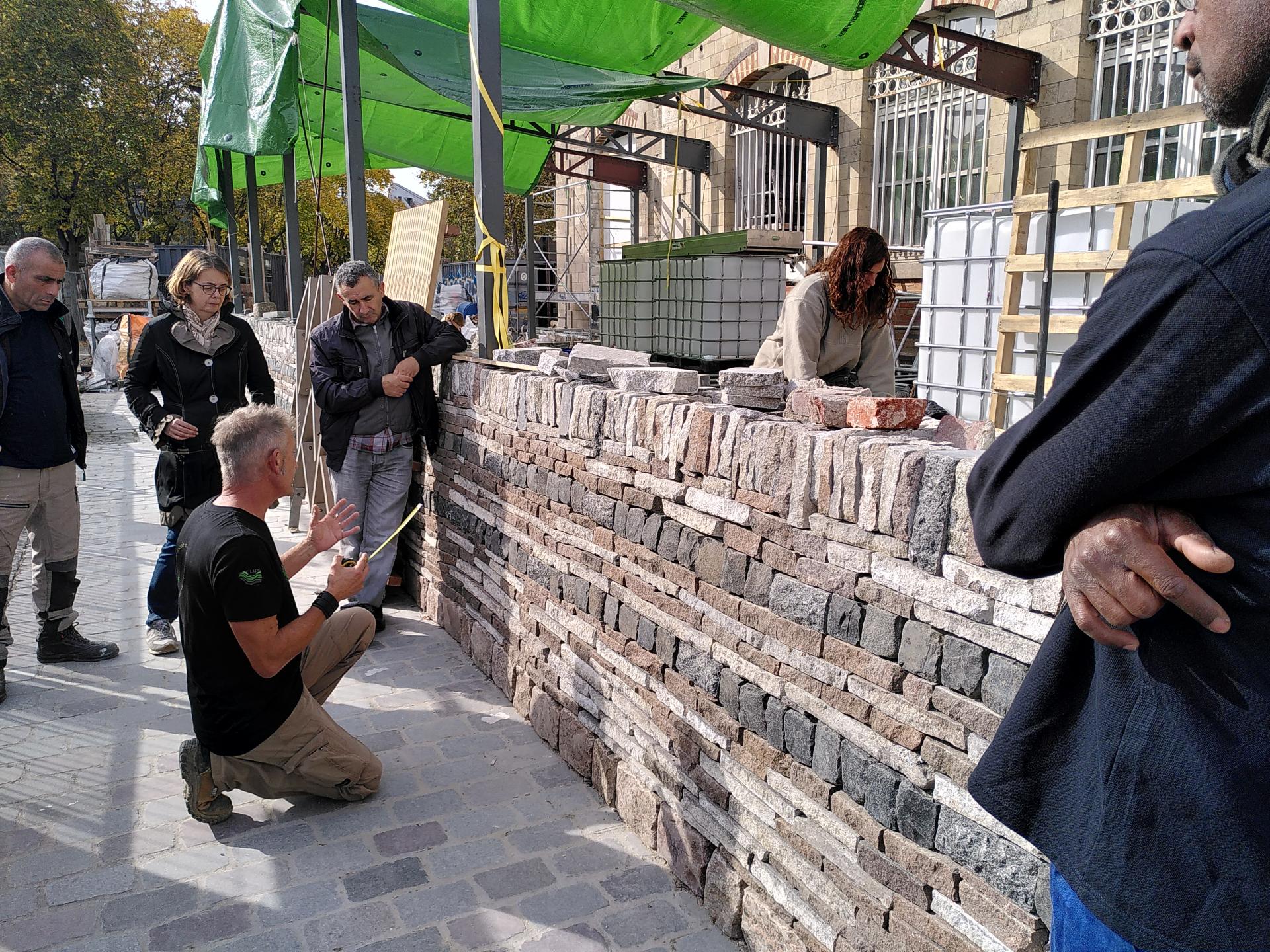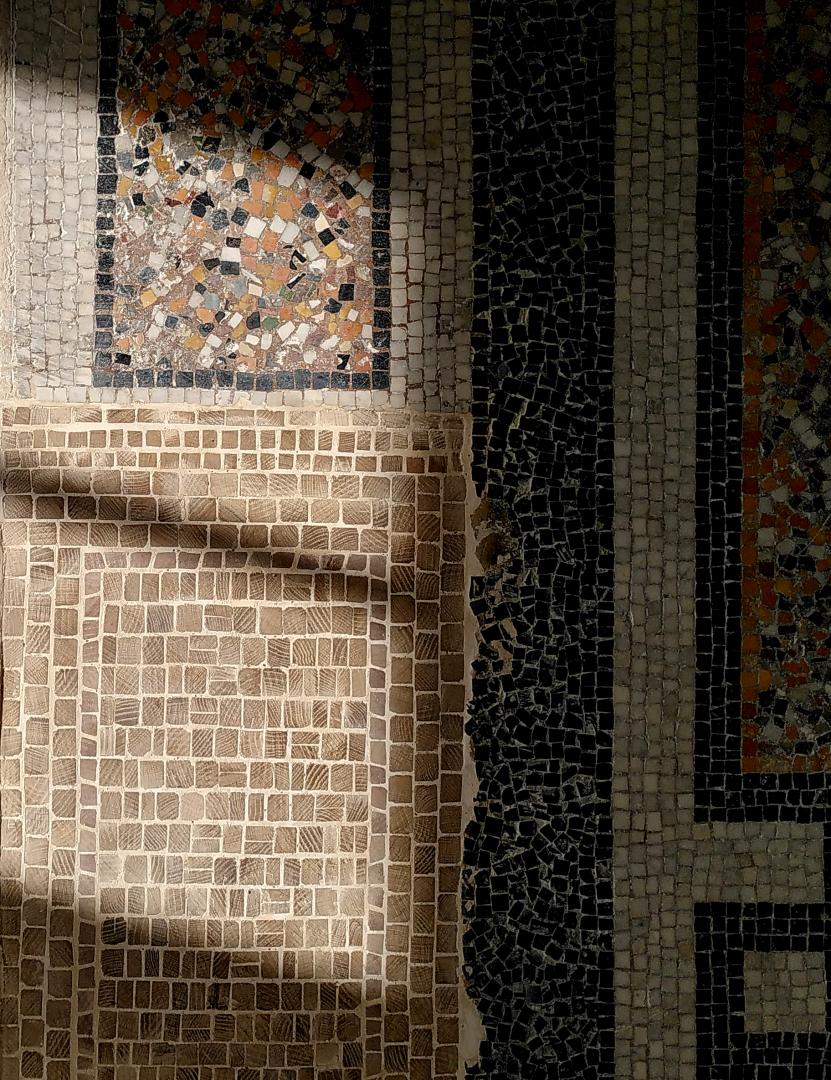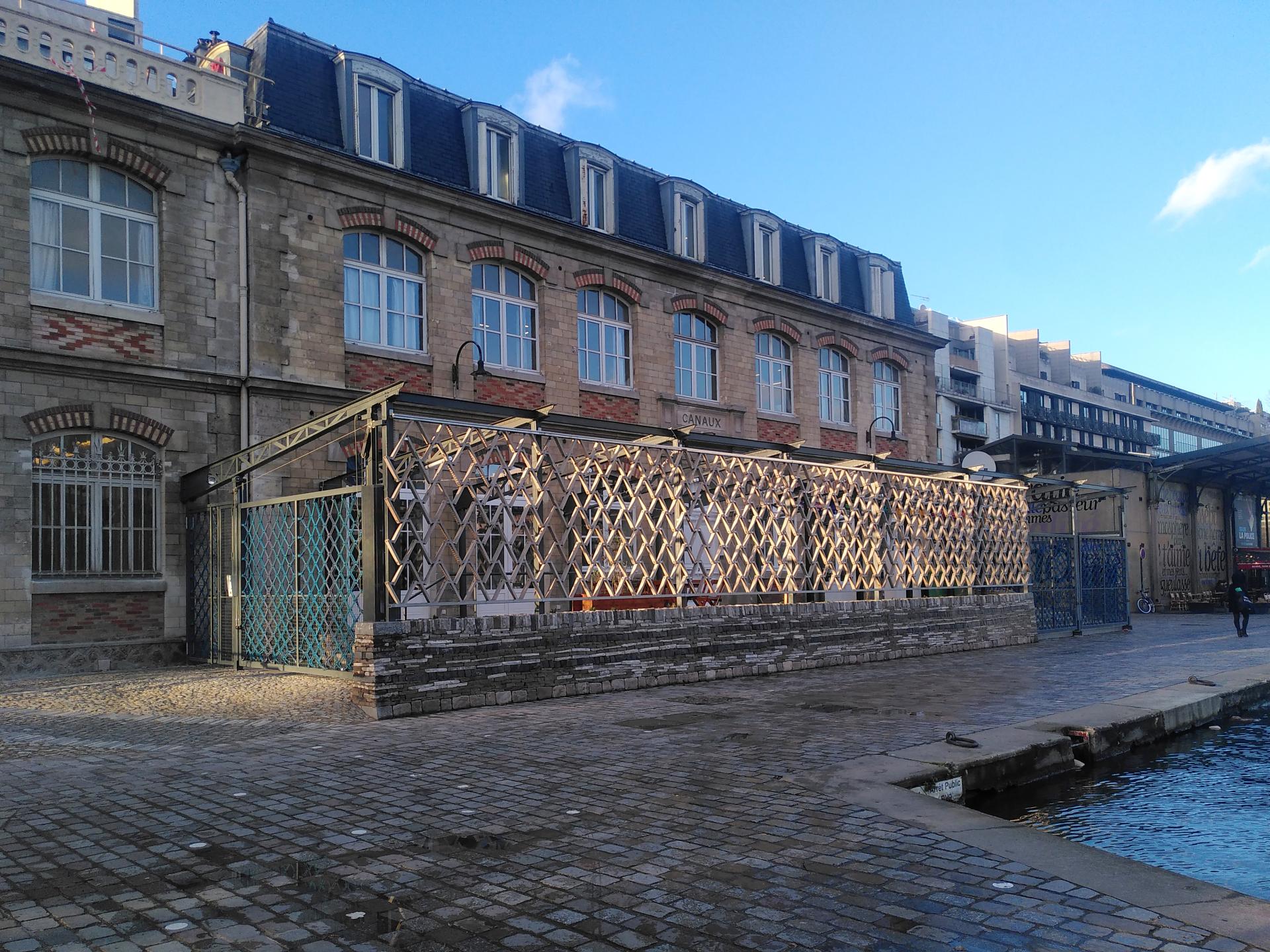La Maison des Canaux
Basic information
Project Title
Full project title
Category
Project Description
The association les Canaux advises, trains and supports economic actors committed to solidarity and the planet, in France and internationally. The City of Paris, which owns the premises, undertook in 2019 the restoration of the existing house that houses it. To do so, it called the Grand Huit cooperative society, which, together with a group of local craftsmen and integration companies, carried out a pilot project that was 100% circular economy through the local transformation of reused material
Geographical Scope
Project Region
Urban or rural issues
Physical or other transformations
EU Programme or fund
Which funds
Description of the project
Summary
The project, initiated by the City of Paris and carried out by Grand Huit team, aims to demonstrate that it is possible, through collective creativity using resources from the reuse of materials, low tech and local know-how, to rehabilitate a building and respond to the needs of the inhabitants while training people in integration.
The Maison des Canaux, a former river freight administration, belongs to the City of Paris. For the past five years, it has been dedicated to supporting the social and solidarity economy by hosting the association called Les Canaux, which supports through training and incubation economic actors who place social and environmental issues at the heart of their practices.
In 2019, the City of Paris launched the major renovation of the premises in order to bring them up to standard and to carry out a pilot project in the image of its occupants. The primary objectives was to improve accessibility for people with reduced mobility, the very poor thermal performance and the capacity to welcome the public.
Pursuing its commitment to a more inclusive and sustainable city, notably initiated at the Ferme du Rail, the Grand Huit cooperative, winner of the call for projects, has brought together a group of design offices, craftsmen and local integration companies.
Through its materiality, its architecture and its implementation, the Canaux building wishes to make desirable a social transformation and become the laboratory where new ways of making and living in the city are collectively experimented to show the inhabitants that it is possible, in a simple, responsible and joyful way, to do a lot with little. It is also about embody the way in which we can take up the major challenges of urban resilience in a supportive manner by sharing resources and reproducible solutions to operate the ecological transition.
Key objectives for sustainability
The approach for the restoration of this building is global. It concerns as well a bioclimatic approach as the material or the energy. It aims to:
1. prioritize the sobriety of materials, energy and water, by restoring the existing, by proposing deconstructable and modular developments as well as low tech equipment
2. rely on the knowledge of local craftsmen and train a workforce in integration
3. source in Paris or its region 100% of reused and bio-geosourced materials or, as a last resort, at least 15% of recycled materials
4. aim for zero landfill waste
Key objectives for aesthetics and quality
On each of our works, the aesthetic question has been central. It is vital to make practices desirable. It is never in a gratuitous formalism proper to the consumerist approach but always in a reconnection with the material and in a valorization of the artisan gesture. We have thus rehabilitated numerous vernacular techniques and crafts such as tapestry, weaving, carpentry, paper folding, traditional plastering, dry stone... which have allowed the metamorphosis of materials destined to be discarded. A local production also guarantees the maintenance of the works.
Key objectives for inclusion
The inclusion dimension of this experiment was essential. It is not a question of reserving a small percentage of the market for integration companies in charge of low-level tasks. Here the integration companies hold 75% of the market. They train workers who are very far from employment in techniques that empower them and in which they find meaning in their practice.
It is also the co-design between craftsmen and architects that has allowed the development of all these solutions. All the solutions have been found in a shared governance where those who make and those who design are equal and feed each other.
Results in relation to category
To measure the effective impact of our actions, we have set up a tool called the Waste Organization and Management Plan (SOGED).
In addition, the city of Paris has set up a life cycle analysis, the results of which will be published very soon, but the first results show exceptional performance.
Local labeling program : to carry out this operation, the City of Paris is being supported by Ekopolis (https://www.ekopolis.fr/) as part of the BDF (Bâtiments Durables Franciliens) program, a support, evaluation and learning system for construction and rehabilitation operations in Paris and its region.
How Citizens benefit
During the year of work, monthly visits of the construction site were organized for a professional public but also opened to the inhabitants.
All along the work, the workers were valued in their action. It was chosen to opt for a non-opaque site barrier, making the site visible and inviting the curious to look through. For instance, the creation of the parvis and the dry stone walls for the terrace were visible to many passers-by and walkers along the dock. Information was given orally to all the many curious people, a poster and a mural explained to the inhabitants the objectives, the issues and the ecosystem at work on this site.
To go further in the transmission and the mix of publics, we invited 15 young volunteers on the dry stone work site who learned the specific techniques alongside the people in integration. It was a wonderful moment of social intensity.
Today, the association les Canaux organizes monthly public visits to transmit good practices.
Physical or other transformations
Innovative character
The innovation of this project is primarily due to its radical approach of zero impact on the environment in terms of resource extraction and waste production. It's also based on the commitment of all its actors to collect the reused materials necessary for its construction throughout the territory.
It is also in the unique mobilization of a local ecosystem and the shared governance it has generated that the project is innovative. The role of the craftsman, the architect, the user and the client has been rethought around a common objective of reducing the impact by the choice of materials, their sourcing and techniques. Rather than technological innovations, the project promotes new collective practices.
The City of Paris has also accepted the architects' proposal to experiment with an interior insulation solution for renovation made up of 100% traditional techniques and bio-geo-sourced materials from the Paris region: wood lath and plaster coating, thus freeing itself from the metal lattice imposed by fire safety regulations. This process is an alternative to the industrial solution of the plasterboard. In order to be used again and to comply with current regulations, the City of Paris asked the Centre Scientifique et Technique du Bâtiment (CSTB) to conduct a fire resistance test. The results are conclusive and the test will be made public by the City of Paris so that everyone can reproduce it!
Learning transferred to other parties
The transmission of a methodology and feedback were the backbone of the project for all, above all achieved through the mobilization of an ecosystem of 43 public and private metropolitan structures in the making of the project. Many project owners, notably social landlords, agreed to rethink their practices by creating inter-site synergies and by donating construction materials to the City of Paris.
European program : Bellastock also accompanied the project within the framework of the European project Facilitating the circulation of reclaimed building elements in Northwestern Europe (FCRBE) for the insurance subject of the reuse of metal structures. The project has been designated as a pilot project.
Broad diffusion : The city of Paris has set up a complete multimedia platform for the restitution of the experimentation. A dedicated website including films showing each step of the process from the construction site to the workshop. The films are intended for both the general public and professionals. The City of Paris and Grand Huit have already given feedback at conferences.
Professional training : Following research carried out by Grand Huit, it became clear that training was a key factor in the development of local materials recycling channels. In partnership with Les Canaux, Ekoplolis, the City of Paris and Grand Huit, a professional training program called "Les chemins du bâtiment circulaire" (Circular Building Paths) has been set up, based on the experience of the site. It raises awareness and trains the entire chain of actors, contracting authorities, project managers and site technicians on the circular economy applied to the building industry and encourages meetings between

